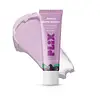What's inside
What's inside
 Key Ingredients
Key Ingredients

 Benefits
Benefits

 Concerns
Concerns

 Ingredients Side-by-side
Ingredients Side-by-side

Water
Skin ConditioningStearic Acid
CleansingLauric Acid
CleansingGlycerin
HumectantSorbitol
HumectantMyristic Acid
CleansingCoco-Glucoside
CleansingPropylene Glycol
HumectantKojic Acid
AntioxidantDipotassium Glycyrrhizate
HumectantPhenoxyethanol
PreservativeEthylhexylglycerin
Skin ConditioningNiacinamide
SmoothingSodium PEG-7 Olive Oil Carboxylate
EmulsifyingSodium Hydroxide
BufferingSalicylic Acid
MaskingTriclosan
PreservativeAllantoin
Skin ConditioningPanthenol
Skin ConditioningDisodium EDTA
Glycolic Acid
BufferingLactic Acid
BufferingTocopherol
AntioxidantAscorbic Acid
AntioxidantPotassium Hydroxide
BufferingParfum
MaskingWater, Stearic Acid, Lauric Acid, Glycerin, Sorbitol, Myristic Acid, Coco-Glucoside, Propylene Glycol, Kojic Acid, Dipotassium Glycyrrhizate, Phenoxyethanol, Ethylhexylglycerin, Niacinamide, Sodium PEG-7 Olive Oil Carboxylate, Sodium Hydroxide, Salicylic Acid, Triclosan, Allantoin, Panthenol, Disodium EDTA, Glycolic Acid, Lactic Acid, Tocopherol, Ascorbic Acid, Potassium Hydroxide, Parfum
Ingredients Explained
These ingredients are found in both products.
Ingredients higher up in an ingredient list are typically present in a larger amount.
Phenoxyethanol is a preservative that has germicide, antimicrobial, and aromatic properties. Studies show that phenoxyethanol can prevent microbial growth. By itself, it has a scent that is similar to that of a rose.
It's often used in formulations along with Caprylyl Glycol to preserve the shelf life of products.
Salicylic Acid (also known as beta hydroxy acid or BHA) is a well-known ingredient for treating skin that struggles with acne and clogged pores. It exfoliates both the skin's surface and deep within the pores to help clear out buildup, control oil, and reduce inflammation.
Unlike AHAs (alpha hydroxy acids), salicylic acid is oil-soluble. This allows it to penetrate into pores which makes it especially effective for treating blackheads and preventing future breakouts.
Salicylic acid is also known for its soothing properties. It has a similar structure to aspirin and can calm inflamed or irritated skin, making it a good option for acne-prone skin that is also sensitive.
Concentrations of 0.5-2% are recognized by the U.S. FDA as an over-the-counter topical acne product.
It can cause irritation and/or dryness if one's skin already has a compromised moisture barrier, so it's best to focus on repairing that before introducing this ingredient into your routine.
While salicylic acid does not increase sun sensitivity, it’s still important to wear sunscreen daily to protect your skin.
If you are looking for the ingredient called BHA or Butylated Hydroxyanisole, click here.
Learn more about Salicylic AcidWater. It's the most common cosmetic ingredient of all. You'll usually see it at the top of ingredient lists, meaning that it makes up the largest part of the product.
So why is it so popular? Water most often acts as a solvent - this means that it helps dissolve other ingredients into the formulation.
You'll also recognize water as that liquid we all need to stay alive. If you see this, drink a glass of water. Stay hydrated!
Learn more about Water